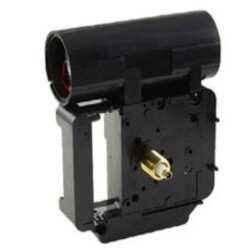Standard Chime Movement

On Time and Chime Clock Movements
Time and also chime clock movements are remarkable, reasonably modern electronic gadgets that integrate the prosaic function of telling time with the older practice of ringing out the hrs with bells. Time and chime clock movements (or electric motors), keeping track of expiring time, position the hr and also min hands to their appropriate positions on a proceeding basis, as well as they also use this info to activate chiming series periodically (i.e., hourly and/or quarter-hourly). These gadgets may also implement certain various other functions or novelties, depending on their designed attribute set.
Chime clock movements use time, you could claim, to carry out all the operations they have actually been configured to fulfill. Nowadays, the motor is not mechanical however electronic, suggesting that it is a lot less overloaded with various physical parts, such as equipments, pendulums, weights, springs, and also escapements. This in turn suggests that they have the ability to work out beyond the capacities of standard, mechanical watches.
Power is required, from one source or another, for the motor to function; in the mechanical situation, hanging weights or curled springs apply torque to flywheels to produce rotational pressure, whereas in the digital case, voltage related to quartz crystals creates streams of pulses at a very high and precise regularity. The mass of things connected with mechanical movements provides them somewhat minimal as well as likewise needs them to be reset or rewound on a periodic basis. Upkeep comes to be troublesome.
The digital clock motion essentially does everything in software. The end outcome is the same, specifically, turning concentric shafts (whereupon are installed the 2 or 3 hands) into position corresponding to the dial as well as its numbers. But as opposed to establishing the right rotational angles through a network of equipments, the pulses from the crystal are counted digitally and also subdivided constantly to calculate stated angles.
This streamlining of procedures makes it reasonably simple and straightforward to display more complicated timekeeping. Instead of a 12-hour cycle (twelve o'clock at night and also noon look the very same), some movements go a full 24 hr or perhaps longer (a week or a month) prior to resetting hand positions. Implementing such time extensions involves specially adjusted dials and also may require an additional hand, yet the effect tends to captivate visitors.
When it comes to the chime capacities of particular clock movements, modern executions tend to imitate comparable capability found in various kinds of clocks (cuckoo clocks, grandfather clocks, and some mantle clocks) going back centuries. The suggestion is to imitate Big Ben, claim, ringing the top of the hour each hr. One more facet is to play a song with the bells or carillon.
Though the expensive timepieces that chimed may have had real chimes installed in a cupboard, that is not likely to be the situation today. Modern movements typically synthesize bell-like noises or play tasted waveforms in melodic series. The result is fairly realistic as well as convincing.
Most people are familiar with the Westminster as well as Winchester tunes, and also 2 others, Whittington as well as St. Mary's, are also popular. You can discover chime movements nowadays that use any kind of or all of these choices. Additionally, in many cases you can videotape your very own tune to sound the hour and substitute it wherefore is provided by the supplier.
A word of caution: chimes appearing every fifteen mins can obtain aggravating rather promptly, regardless of exactly how captivating. This is particularly real if the clock remains in or near a bedroom. We recommend making sure your movement has a switch for silencing the chime or at the very least disabling it during the night.
There's no question that the clockmaker has at their disposal a broad collection of tools for producing wonderful wrist watches. A great way to stun your close friends or member of the family is by developing clocks based upon time and chime clock movements.